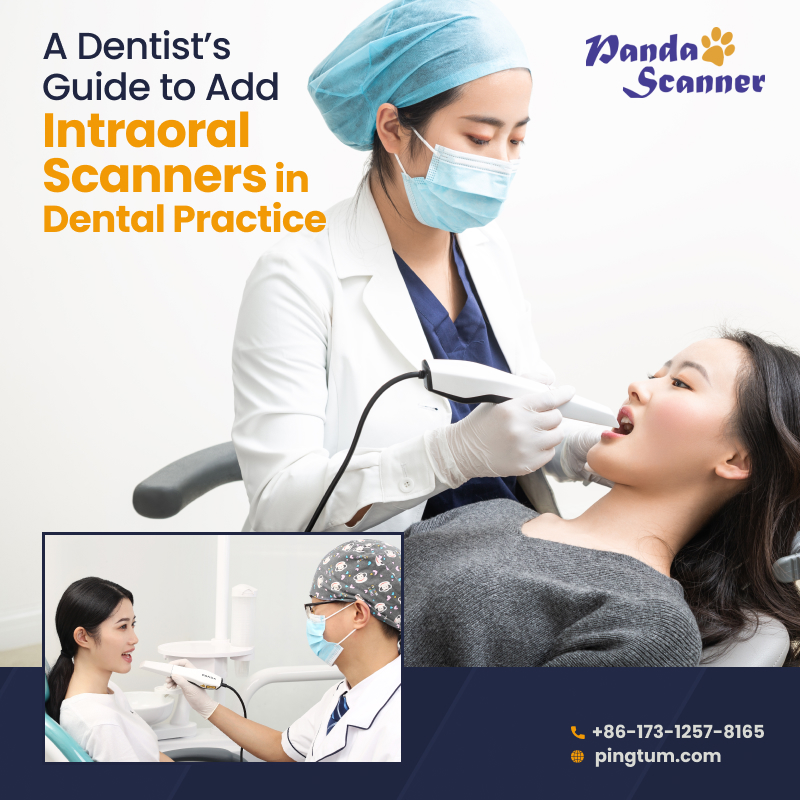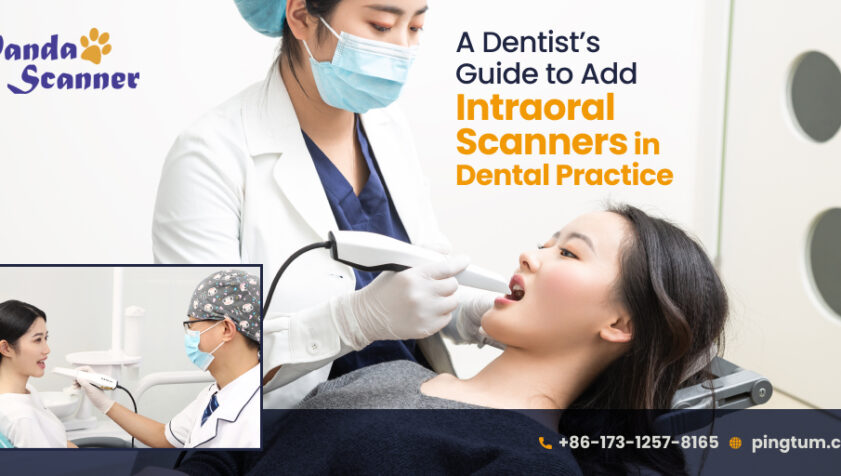In the world of dentistry, the introduction of intraoral scanners has brought a lot of relief to dentists and patients as these devices have transformed the dental scanning process. This is why dentists are increasingly investing in intraoral scanners and integrating them with their dental practice. A standard digital scanner puts a dental practitioner at a vantage point, as it enables him/her to do accurate, faster, and more convenient diagnoses and treatments. With traditional dentistry, this would not be possible since the process involves the use of alginate materials, while in digital dentistry impressions are obtained by projecting light into the patient’s buccal cavity. Due to these and other reasons, intraoral scanners are winning the confidence of dentists and patients. So, as a dentist, it would be a great decision if you integrated these scanners into your dental practice.
Now, if you are interested in knowing how you can integrate intraoral scanners into your dental practice, then here is a complete guide for you. Take a look to learn the steps.

A Step-by-Step Guide to Adding an Intraoral Scanner to Your Dental Practice
Switching to digital dentistry must not be hurried, instead, it should be a gradual, slow, and steady process. This is because it involves understanding and learning. So, if you hurry, you can easily commit mistakes. So, here are some steps for you to follow to successfully integrate intraoral scanners into your practise in the right manner.
Choose an application
It is important that you first use this scanner for an application that adds the most value to your business. So, make sure to choose an application or a workflow that is not reliable, inefficient, and also expensive. Now, install a good quality intraoral scanner like Panda scanners. With the help of these scanners, you can offer various kinds of treatments for instance guided surgery. What you can do is select a single product or workflow and begin with a single-use case. Afterwards, you can use the scanner for other applications.
Define the digital workflow
For the particular application that you have chosen, first initiate and try to complete the step-by-step digital workflow. Simultaneously, determine whether the integration of the intraoral scanner with the workflow would be beneficial for you or whether traditional dentistry would be a better option. A proper demonstration of how the intraoral scanner works will help you understand how you can use it to make the best use of it and, most importantly, where you can place it in your dental workflow.
Learn, and then expand your use
One of the most important things when using a new device or tool is to learn about its workflow, which you can do when using it in the demonstration phase. In this stage, learn from the steps and then get your doubts solved. Then, once you become completely familiar with the device’s workflow, you can switch to an end-to-end digital-driven dental workflow connected to the laboratory. Following all these steps should not be critical for you, since the moment you switch to digital dentistry, you will see that you are earning a greater ROI than too much quickly.
Clinic and lab workflow
To get implant surgery performed in traditional dentistry, the patient is first required to give a physical impression of the buccal cavity. As mentioned before, in traditional dentistry, physical impressions are obtained using the alginate material. So, in this process, once impressions are obtained and the moulds change into a solid and dry state, they are transferred to the dental lab, where the restoration solutions are created. On the other hand, with the help of an intraoral scanner, the use of alginate material is eliminated, and the procedure is short and takes a minimum amount of time to transfer the impressions to the laboratory, where the impressions are fabricated with the help of digital 3D printing.
Conclusion
With the pace at which intraoral scanners are replacing traditional dentistry, it would be difficult for dentists who are not investing in it to match the competition in this area. The reason behind this is quite simple to understand: the intraoral scanner is built to be fast, comfortable, accurate, and convenient, and these are what patients want while undergoing any dental procedure. So, dentists who are incorporating intraoral scanners in their dental practice are naturally earning more patients’ footfall than the ones who are not. It can be said that traditional dentistry is slowly fading away. So, if you are a dentist, then it’s time that you embrace digital dentistry and invest in a quality intraoral scanner. However, when you are integrating it into your dental practice, keep in mind to follow these steps to get the best outcome.






